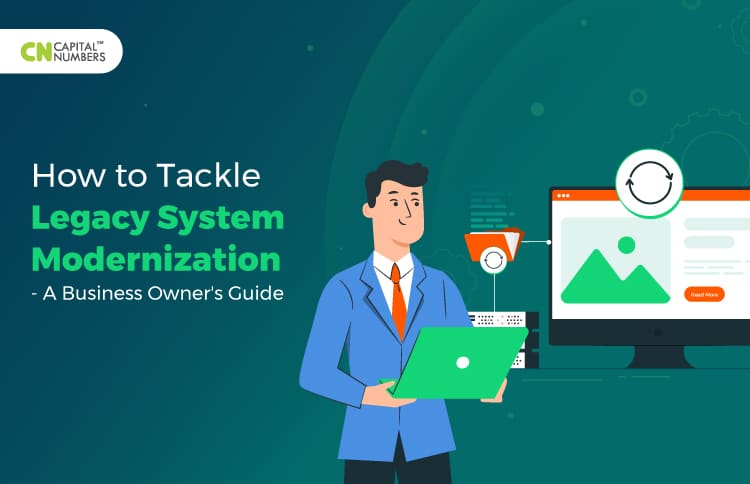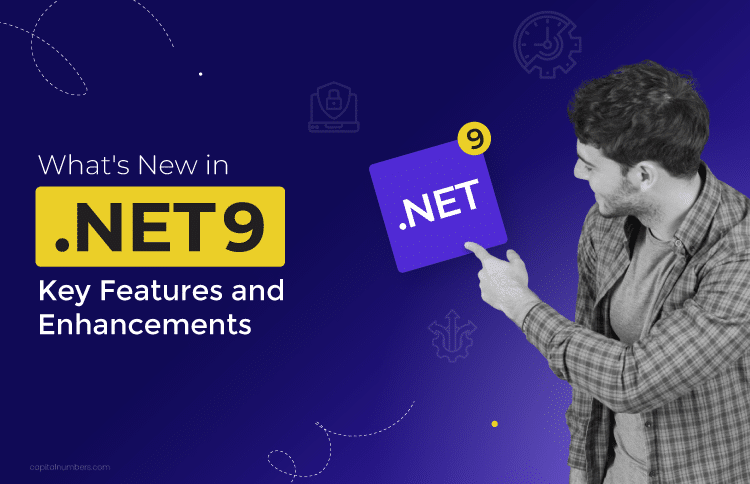How to Tackle Legacy System Modernization – A Business Owner’s Guide
Table of Contents
A legacy application is any software based on outdated technologies being used for day-to-day operations. Therefore, legacy-system modernization is a vital aspect of the overall business digitization that makes you ready for the digital future.
Legacy systems require modernization so that they don’t get exposed to any crashes or security threats. And the cost of running such software is very high too. Major sources of legacy software overhead include maintenance and support, integration and compliance, security, lost business opportunities, and organizational agility and efficiency. So, you must upgrade your legacy systems to prevent revenue loss.
This article describes the benefits of legacy system modernization, a checklist for performing system modernization, and the techniques of doing so in a hassle-free manner.
There are actually many benefits of legacy system modernization that include:
- Competitive advantage: With up-to-date and lightweight solutions, you can outperform competitors that are still using decade-old technologies.
- Innovative business: Contemporary systems give an opportunity to evolve, innovate, and expand while keeping up with technological advances.
- Customer satisfaction: Intuitive, modern, and sleek UI/UX experience not only improves your customer satisfaction but also boosts revenue.
- Better performance and reduced risk: Legacy IT failures may lead to several losses, whereas system modernization improves performance and reduces risks.
- Big data opportunities: Database migration and optimization successfully unlock big data opportunities with which you can access and use the data efficiently.
Well, there are several challenges and risks also that you need to consider. The time and money involved in re-engineering the software are two of the major concerns.
As with any software development project, you will need an estimation of your efforts, which can be done using specific methodologies and tools namely, COCOMO (Constructive Cost Model), FPA (Function Point Analysis), and The Putnam Model.
Now, let’s move on with the checklist for the winning software modernization project. If you are ready with the list of specific aspects of system modernization, chances are you will be able to cross the line without any hassle and system downtime.
| Study the current state of legacy systems Assess all the possibilities for the current and potential future issues rather than just concentrating on tech stack upgradation. |
Choose the fastest to deliver modernization approach
Depending on the best fit to your needs, you can also go for agile software development practices that speed up the process while delivering the value faster. |
Uphold the simple structure rather than overly complex
In system modernization, less is more when it comes to architecture and functionality. Initially, only execute the most important features. For product scalability, you can choose a microservices architecture approach. |
| Use a solid technology stack The correct, solid, and future-ready tech stack helps build a high-performing, consistent, and efficient product that enhances user experience. |
Orderly document coding standards
With a well-documented and clean code, it gets easy to understand, and maintain your software in the future. This way, you can also avoid the mistakes that caused you to re-engineer your current system. |
Support your legacy system until the retirement plan for your system is ready
Sometimes you may need the document and archives to easily access or refer to them as required. Therefore, maintain your legacy system for some time and create a retiring schedule until your new product is up and thoroughly tested. |
| Consider staff training and system updates
Your team may need extra time and guidance to fully comprehend the new system. To provide staff training to enhance performance and efficiency. The regular system update is also essential to avoid another modernization challenge. |
Once you determine the aspects of system modernization, decide on the best practices of modernization to apply. The most popular modernization approaches are migration and enhancement, correction and growth, and complete software reengineering. Depending on your current legacy challenges, you can opt for any of these approaches with specific techniques.
| Encapsulation This technique works best for reusing legacy software components, especially when the business has high value and has good quality code. It gives an opportunity to leverage and expand the application features by encapsulating its data and functions that allows access to layers via an API. |
Rehosting
Here, the application components are redeployed to other infrastructure including physical, virtual, or cloud without any modifications in its code, features or functions. This is the faster technique with the lowest cost and risk. |
Replatforming
Migration or up-versioning to a new runtime platform is done with the least changes to the code while preserving the existing code structure, features, or functions. |
| Code refactoring This technique assumes the restructuring and optimization of the existing code without changing its external behavior. It helps to solve technology problems and improve the non-functional attributes such as component’s features and structure. |
Rearchitecting
It involves moving to a new application architecture with the code modification so that the new and better capabilities of the platform get fully utilized. |
Rebuilding
This technique includes redesigning or rewriting the application component from scratch, maintaining its scope and specifications. It also offers new features and functionalities. |
| Replacing
Sometimes it’s required to remove the former application component on the whole and replace it as new requirements and needs arise. |
To Summarize
Though software modernization seems to be a complex, labor-intensive, and risky process, the results are often worth the risk. Make sure that you select the modernization approach that gives the highest return and adds value to the business. Consider the above seven modernization techniques with respect to their effect on architecture, technology, functionality, cost, and risk.
Rearchitecting comes with medium costs and risks, whereas rebuilding or replacing provides the best results with higher costs and risks. You should determine the approach with the minimum effort and maximum positive impact.
So, to live up to the demands of the latest digital transformation economy, don’t miss on the legacy system modernization!















